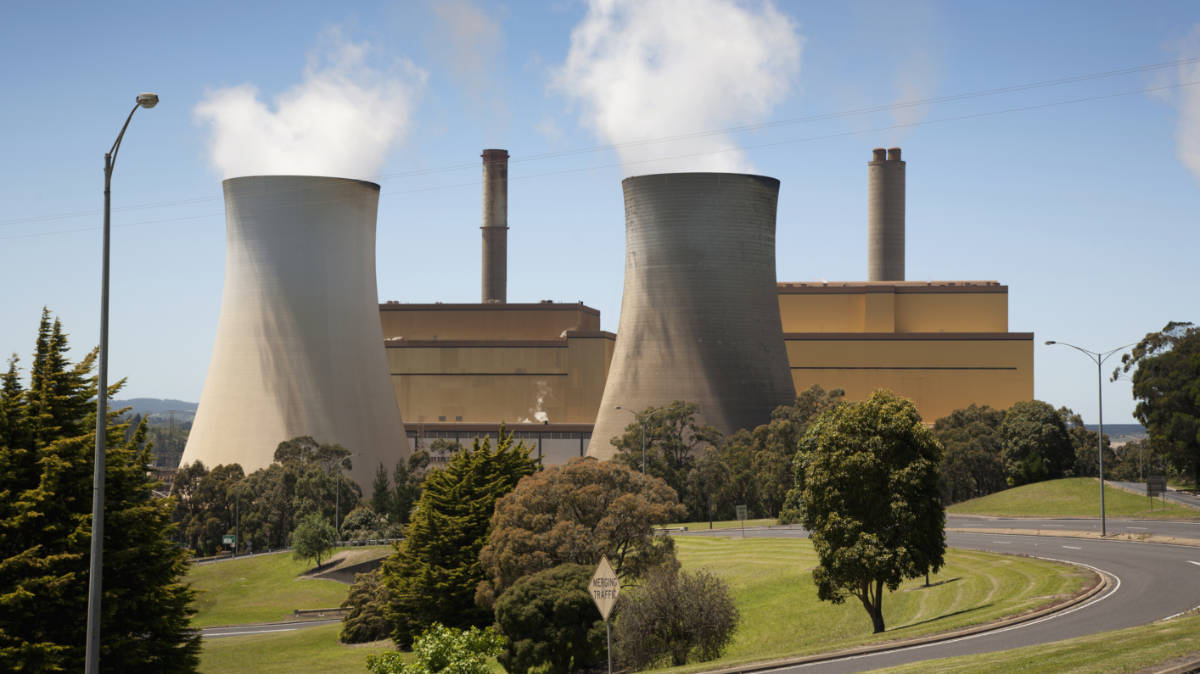Australian brown coal plant Yallourn to be replaced with world’s largest battery

Brown coal fuelled power plant Yallourn will close in 2028 and be replaced by a battery. Image: Getty
- Yallourn Power Station, fuelled by brown coal, will close early and be replaced by a battery
- ‘Customers want affordable, reliable, cleaner sources of energy’
- World’s largest battery plant with 350Mw of generation capacity to replace coal plant
One of Australia’s largest generation plants for electricity, Yallourn power station, is scheduled to close in mid-2028 and will be replaced by a giant battery storage system.
Energy Australia, the plant’s operator, announced the closure move Wednesday, and the company has been developing solar power battery projects in the past few years.
“Customers want affordable, reliable, cleaner sources of energy and as Yallourn has proudly supplied energy for 100 years we want to harness our history, and the expertise of our workforce to repower Victoria,” managing director, Catherine Tanna, said.
Yallourn will be replaced with Australia’s first utility-scale battery with a capacity of 350Mw that is scheduled to start operating in 2026 from a site in the Latrobe Valley.
“Meanwhile, our new battery will help to secure Victoria’s energy supply and enable more renewables to enter the system. It will be larger than any battery operating in the world today,” Tanna added.
The closure of Yallourn will reduce Energy Australia’s carbon dioxide emissions by more than 60 per cent, and the shutdown has been brought forward from 2032.
The power company has set a goal of achieving carbon neutrality for its electricity generation operations by 2050.
Tesla Powerpack battery system
The company already operates an energy storage system in the form of a 25Mw capacity Tesla Powerpack battery for its 50Mw Gannawarra solar farm.
Gannawarra is the first integrated solar storage project in Victoria, and among the largest of its kind in the world since opening in 2019.
Energy Australia can discharge energy stored in the Tesla Powerpack battery to the Victorian power grid under a storage agreement with the solar farm’s operator Edify Energy.
The power company also operates a 30Mw energy storage system comprising a battery at the AusNet Services Terminal Station in Ballarat.
“Energy Australia is determined to demonstrate that coal-fired power can exit the market in a way that supports our people and ensures customers continue to receive reliable energy,” added Tanna.
Tesla supplied and installed one of its Powerpack batteries at a wind farm in South Australia four years ago that has a capacity of 100Mw.
The Tesla Powerpack system in South Australia is currently the world’s largest lithium battery system, and the company also produces a Megapack massive energy storage system.
It is unclear at this stage whether Tesla is to supply the battery system to replace the Yallourn Power Station.
Yallourn provides one-fifth of Victoria’s electricity
Yallourn in Victoria’s Latrobe Valley provides 22 per cent of Victoria’s electricity, and represents 8 per cent of Australia’s National Electricity Market.
The 1,480Mw installation provides base-load power for 2 million homes, factories and offices in Victoria by burning locally-mined lignite, a type of sulphur-heavy brown coal.
Yallourn’s boilers consume 18 million tonnes per year of this brown coal which is used to generate steam that drives four large turbine generators at the power plant.
The current power plant at Yallourn was built in 1974, but was preceded by other installations that generated electricity going back to the early 1920s.
Energy Australia continues to operate the Mt Piper coal-fired power plant near Lithgow in New South Wales which generates electricity for 1.2 million households in the state.
The power company is owned by CLP Group, a Hong Kong-based company with power generation operations in Australia, India, China, Hong Kong and Southeast Asia.
Another brown coal-fired power station in the Latrobe Valley, Hazelwood, with a generation capacity of 1,600Mw closed in 2017 after operating for 53 years.
Two Victorian brown coal plants remain
Victoria is left with two remaining brown coal power plants, Loy Yang A and Loy Yang B, with a generation capacity of 2,210Mw and 1,070Mw, respectively.
Located in the Latrobe Valley and fuelled by 30 million tonnes per year of locally-mined brown coal the two plants generate 50 per cent of Victoria’s electricity.
The Loy Yang plants also supply electricity to Tasmania via an undersea interconnector, and there is talk of bringing forward their end-of-life closure dates in the late 2040s.
Australia’s electricity market is facing a ‘tidal wave’ of new renewable energy supply over the next five years, equivalent to one-third of annual demand in the National Electricity Market.
The analysis by the Institute for Energy Economics and Financial Analysis (IEEFA) and advisory firm Green Energy Markets forecasts Australia’s surviving coal plants are vulnerable to closure.
“The market is facing a tidal wave of new supply, much greater than anything government authorities or market analysts forecast or even contemplated just two years ago,” Green Energy Markets director, Tristan Edis, told ABC News.
New wind turbine and solar power plants will add 70,000 gigawatt hours of extra supply between 2018 and 2025, and greater than the entire annual electricity consumption of NSW.

UNLOCK INSIGHTS
Discover the untold stories of emerging ASX stocks.
Daily news and expert analysis, it's free to subscribe.
By proceeding, you confirm you understand that we handle personal information in accordance with our Privacy Policy.








